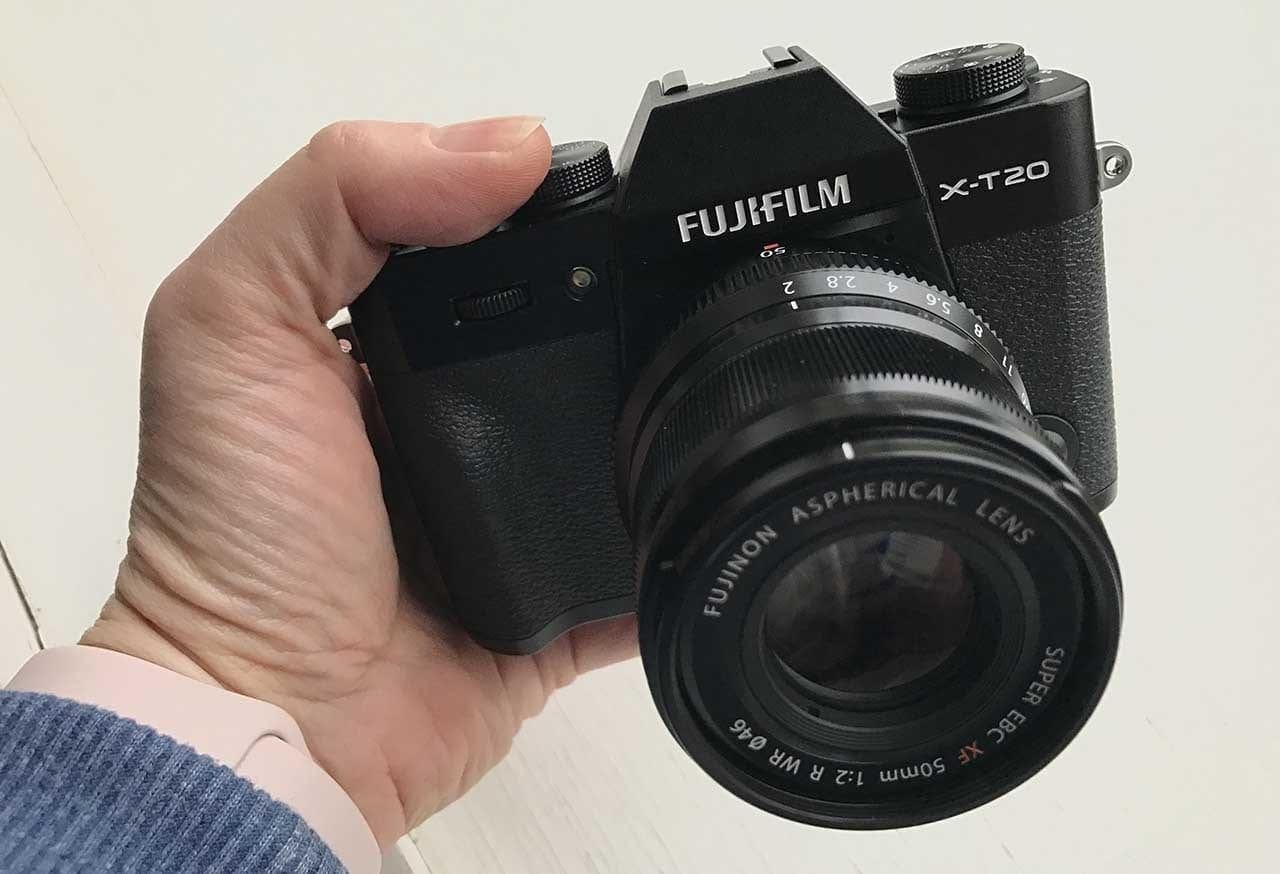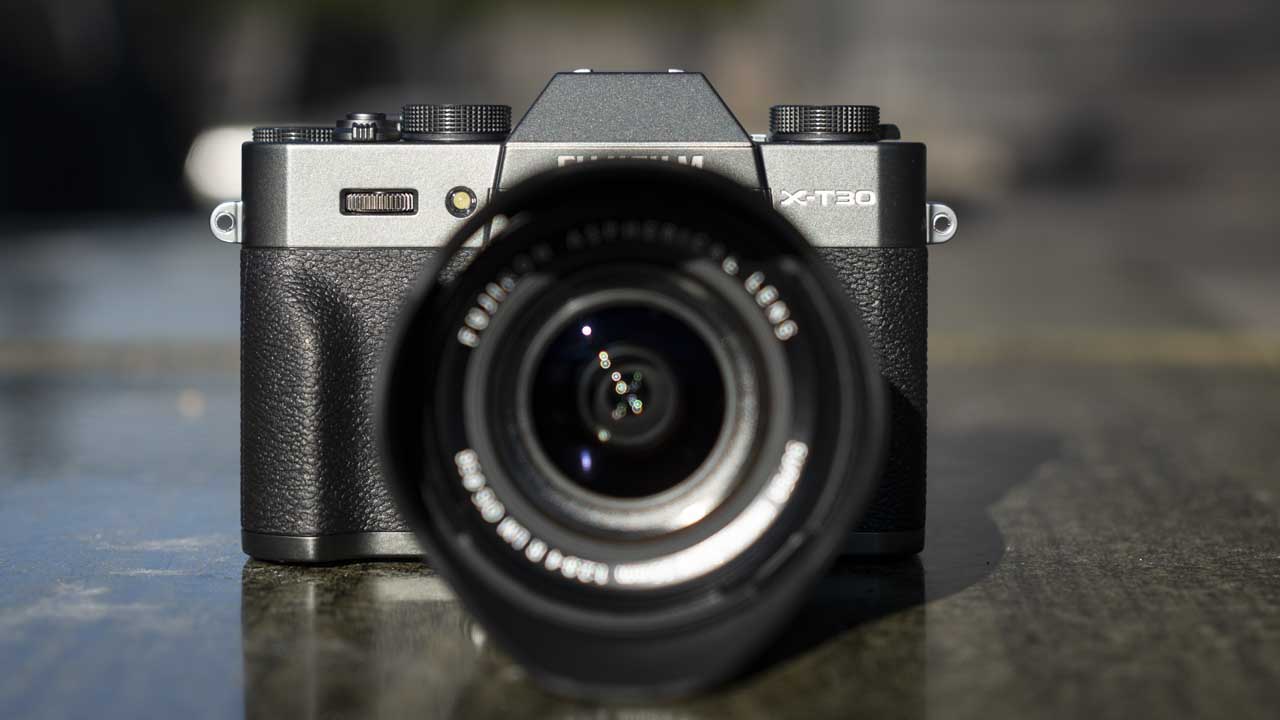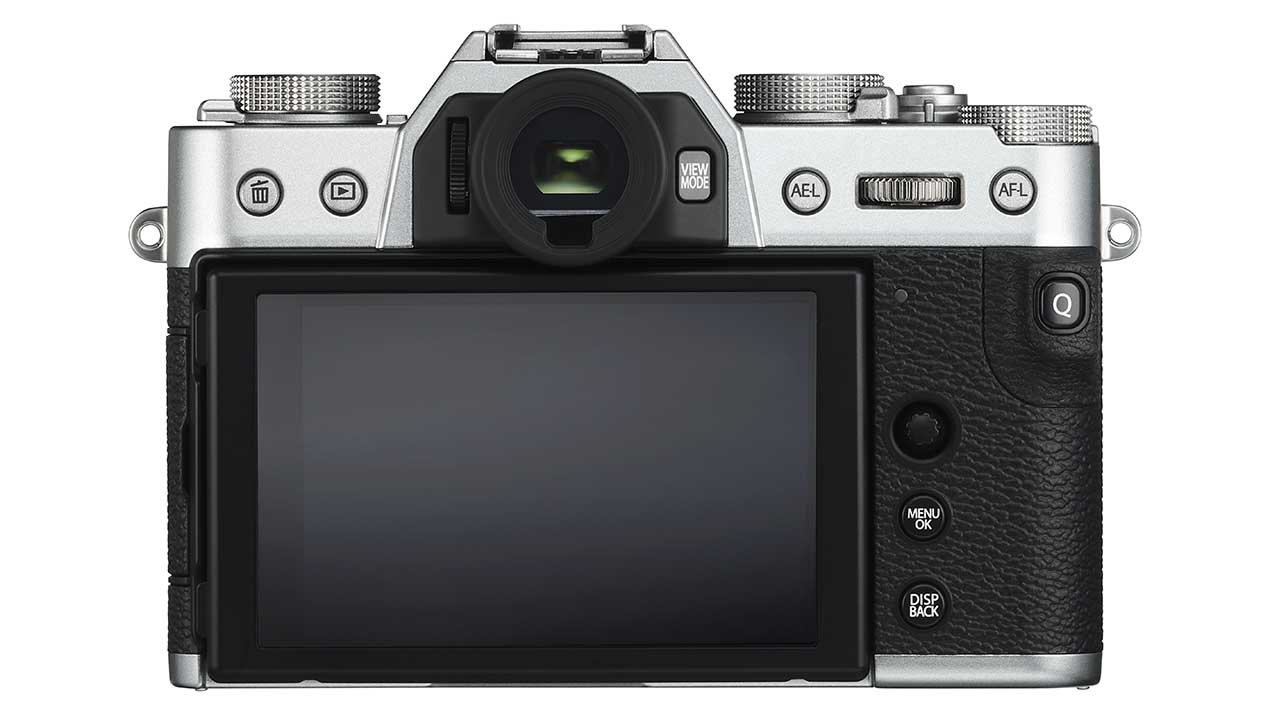Fujifilm has replaced its best-selling X-series camera, the X-T20 with the Fuji X-T30. And although there are some similarities, there are some very significant differences that make it a pretty solid upgrade.
So let’s take a look at how the Fuji X-T30 compares with the X-T20.
Fuji X-T30 vs XT20: What’s the same?
The Fuji X-T30 has a few things in common with the X-T20 that it replaces. It has a similar mini-DSLR design with a built-in pop-up flash, for example. And the usual traditional controls are there along with the same high-quality feel. But there are lots of tweaks, so even things that seem the same are actually slightly different.
The electronic viewfinder, for example, is the same 0.39-inch OLED unit with 2,360,000 dots. However, it has a refresh rate of 100fps in Boost mode which makes it a little better.
Similarly, Fujifilm has plumped for the same size and resolution screen (3 inches and 1,040,000-dots). However, the X-T30’s monitor is 1.3mm thinner than the X-T20’s and this helps make the camera slimmer overall. In addition, the X-T30’s touch-screen is compatible with gesture control.
Both cameras have a USB-I SD/SDHC/SDXC card slot.

Fujifilm X-T20
Sensor and Processing Engine
Fujifilm has followed its usual pattern and given the X-T30 many of the features we saw introduced with the X-T3. That means that the sensor has had a resolution boost from 24.3Mp to 26.1Mp. It also means that there’s a change from the X-Trans CMOS III sensor to the X-Trans CMOS 4 chip.
This is a backside-illuminated (BSI) sensor and it’s paired with the new X-Processor 4. We saw with the X-T3 that this combination brings a slight improvement in image quality. However, the increase in pixel count means that Fuji has kept the X-T30’s top sensitivity setting the same as the X-T20’s. The native ISO range tops out at ISO 12,800 and there’s a maximum expansion setting of ISO 51,600.
At the lower end of the scale, however, the X-T30 has a minimum native value of ISO 160. It can also be set to ISO 80 if you’re prepared to sacrifice shooting raw files. The X-T20 has a native range of ISO 200-12,800 and an expanded range of ISO 100-51,200.
Autofocus System
Fuji has made some significant upgrades to the hybrid AF system for the X-T30.
For a start, 2.16 million pixels are used for the phase detection autofocusing. It’s just 0.5 million with the X-T20. As a result, the Fuji X-T30 has 100% coverage of the frame with phase detection points.
There’s also up to 425 individually selectable AF points. That’s up from 325 with the X-T20. Also, each AF point on the X-T30’s sensor is informed by 4x as much data. That means it should be more responsive and accurate.
Low light sensitivity has also improved. The X-T20’s AF system is sensitive down to -1EV while the X-T30’s can operate at -3EV.
In addition, Fujifilm has improved the Face & Eye Tracking system for the X-T30. It’s said to be faster and more stable than the X-T20’s while the exposure is more consistent when a face is detected.
With the X-T20, a face has to occupy at least 10% of the vertical space to be detected. This has reduced to 7% with X-T30. There’s another nice refinement with the X-T30 when this mode is in use, only a single box is displayed if an eye is detected. With the X-T20 you often see two boxes, one around the face and the other around the eye.
Continuous Shooting
If you want to shoot at the 26.1Mp resolution of the X-T30, the maximum rate is 20fps (frames per second). The maximum rate possible with the X-T20 is 14fps. However, the X-T30 can go even faster (with continuous focusing) and shoot at 30fps with a 1.25x crop. That’s blackout-free, so you get a clear image of your subject as it moves.
Switch to the mechanical shutter, however, and the X-T30 and X-T20 both have a maximum rate of 8fps.
If you’re shooting Jpegs, X-T30 still has a slight advantage here as it can maintain that rate for 90 images. The X-T20 stops at 62. However, it’s a different story with raw files as the X-T20 can shoot up to 23 uncompressed raw files whereas the X-T30 can only manage 18.
Video
Although the X-T20 and X-T30 can both shoot 4K video at 30fps, the X-T30 has some advantages. For instance, the X-T30 has a DCI (17:9) mode for 4K and Full-HD footage.
There’s also the option to shoot in F-Log mode with the X-T30.
And, if you record to an external device connected via HDMI, you can shoot in 4:2:2 10-bit colour at the same time as recording 4:2:0 8-bit to an SD card in the camera.
The X-T20 can only shoot 4:2:2 8-bit via HDMI or 4:2:0 8-bit to a card, not both at the same time.
Fuji has boosted the maximum bitrate in 4K/30p from 100Mbps with the X-T20 to 200Mbps with the X-T30.
- X-T30
Design and Control Layout
Although the X-T30 looks very much like the X-T20, there’s a significant difference on the back of the camera. The navigation pad that sits below the thumb rest on the X-T20 has gone. Instead, there’s what Fuji calls a Focus Lever, or mini-joystick. This means there’s a bit more room on the back of the camera for your thumb.
The joystick is also quicker and easier to use to shift the active AF point around the frame or make menu selections. It’s especially useful when you’re looking in the viewfinder.
And, as I mentioned earlier, the X-T30 can also be controlled using gesture control on the screen. This can take a bit of getting used to, but it can also speed some setting changes.
Film Simulation Modes
Fujifilm has added the Eterna Simulation Mode to the X-T30. This brings the tally to 16, one more than the X-T20.
Eterna produces stills and video with low contrast and low saturation. It’s designed for use when you want to carry out post-capture grading.
[table id=98 /]




